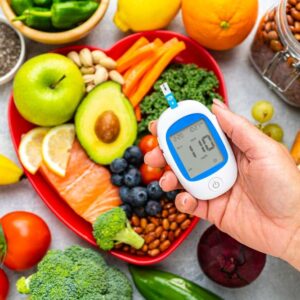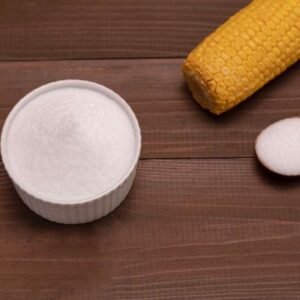Prevent Pet Arthritis With This Natural Solution
- Is your pet having trouble walking and getting up and irritable? Find what might be the cause…
- Discover how this safe and effective supplement could change your dog’s life
- Sometimes eggs just aren’t enough. Find out what other natural food you should be feeding your best friend.
Dear Reader,
“Wait… what? Is that even a thing? He has arthritis in his… what?”
Vets have been warning me that my French bulldog would end up with arthritis for years.
And it’s not that I believed it would never happen. It’s just been shocking how long he’s lived without getting it — he’s 11 years old and still shows no signs of pain or stiffness.
But since he’s a senior dog, when he went in for a yearly checkup, the vet did an X-ray just to be sure his hips were in good shape. But what the X-ray revealed was unusual.
It seems that my dog does have arthritis… but not in his hips.
He has arthritis in his tail.
And here’s what makes the news even more strange. My dog has one of the tiniest tails I’ve ever seen.
I mean… look at it.

It’s so little, he can’t even wag it. Instead, his whole backside gyrates wildly when he’s happy.
So I was a bit shocked by this news. I always figured he would get it in his hips or his front paws, since his body is such a funny shape — but his tiny tail never even crossed my mind.
As it turns out, though, arthritis of the tail is a thing. And it’s kind of common.
In fact, it’s possible that your dog could be suffering from it too.
But the threat of arthritis isn’t limited your pup’s tail (or just your pup, for that matter. Kitties can get it too). It can attack any joint in your best bud’s body.
![]() Collagen to the Rescue!
Collagen to the Rescue!
Arthritis in animals, just as in humans, is caused by the breakdown of cartilage. This firm but flexible substance absorbs shock and pressure during movement. When the amount of cartilage in your joints is reduced, it causes this painful and debilitating condition.
If you notice your pet is experiencing trouble getting up, joint stiffness, trouble walking, lameness, depression, lethargy, irritability or aggression when being touched, they may already be suffering from arthritis.
Luckily, research shows there is a supplement that can help support the joint health of dogs suffering from this chronic and painful condition — collagen.
Collagen is a naturally occurring protein that is a key component in the connective tissues in animals. In fact, it’s the most abundant protein in mammals. While there are several types of collagen, collagen Type II is a vital building block of cartilage, so it’s often used for joint support.
A study in the Journal of Veterinary Pharmacology and Therapeutics shows that undenatured Type II collagen (UC-II) can reduce pain and exercised-induced lameness in dogs.
But what was more impressive — this study was done exclusively on obese, large-breed dogs, which are prone to arthritic problems.
Fifteen dogs participated in the study and were divided into three different groups. Group one received no UC-II, group two received 1 mg of UC-II daily and group 3 took 10 mg per day, for a duration of 90 days.
During the study, pain and lameness were measured on a weekly basis for 120 days. The first 90 days were over the course of the study, and the last 30 days were post-treatment. In addition, blood samples were taken to ensure the collagen didn’t cause any adverse effects such as kidney or liver damage during the course of the study.
At the end of the 90 days, dogs taking the 1 mg and 10 mg doses of UC-II showed significant declines in overall pain, pain from being touched and lameness after exercise. However, the dogs getting 10 mg showed the greatest improvements. Those getting no collagen showed little improvement.
During the 30-day period after treatment, all dogs experienced a relapse of overall pain, pain upon touching their limbs and exercise-associated lameness. This means the collagen likely reduced the dog’s arthritis-induced pain.
Not to mention, the dogs taking collagen showed no signs of adverse effects.
This study shows that daily doses of collagen may be a safe and effective way to alleviate the painful symptoms of arthritis in dogs.
![]() Better Joints, Better Life
Better Joints, Better Life
Joint health decline can be devastating for your pet. Without healthy joints, your little pal may suffer from debilitating pain and slowly start to shy away from the things they once loved, like long walks, playing fetch and running in the yard.
There’s no doubt I’ve been lucky with my dog. His joints have held up very well for his age, and he still enjoys walking and playing, regardless of the arthritis in his tiny tail.
One reason may be because I feed him eggs on a weekly basis. Eggs are a natural source of collagen, but may not be enough to support him into his golden years.
So recently, I’ve been supplementing his diet with collagen powder.
While it’s not the undenatured variety used in the study, it seems to be very effective. He’s still not showing any signs of stiffness and actually seems a bit more spry than before he started on the collagen.
And it’s super easy for me, too. All I have to do is sprinkle a tablespoon over his food and voilà! He gobbles it right down.
This study focused solely on dogs, but it would make sense that collagen is also good for cats.
If you’re looking for a collagen supplement for your pet, be sure to use products that contain Type II collagen and are made from either beef or pork products. I recommend Great Lakes. Click here to check it out.
Check with your vet before starting a pet on any supplement.
Live well,

Natalie Moore
Managing editor, Living Well Daily
Sources
[1] What is collagen? What does collagen do?
[2] Symptoms and Signs of Arthritis in Dogs
Written By Natalie Moore
Natalie Moore is a dedicated health researcher with a passion for finding healthy, natural, and science-based solutions. After a decade of direct healthcare experience in western and natural medicine, she was involved in public health research before joining Living Well Daily.
View More Free Articles
This Sleep Mistake Is Doubling Your Disease Risk
Think your inconsistent bedtime is just a harmless habit? Think again. New research reveals that going to bed at different times each night isn’t just making you tired—it could be dramatically increasing your risk of serious diseases. But the key to making sure poor sleep doesn’t derail your health goals likely isn’t what you think…....
Stop Obsessing Over Diet Trends
Can we stop with the endless diet debates already? Every other week there’s a new headline shouting about which diet is best for weight loss, heart health, or diabetes. Paleo, keto, low-carb, high-protein… it’s exhausting. And now, a new meta-analysis is out comparing the Mediterranean diet, the DASH diet, and something called AHEI (that’s “Alternative...
A New Reason to Ditch Processed Junk
If you’ve ever walked the inside aisles of your local grocery store and thought, “This is all just junk,” your instincts were spot on. A new study published in the journal Thorax just added another red flag to the list of dangers linked to ultra-processed food—a 41 percent higher risk of lung cancer. That’s right....
When Being Winded on Stairs Is Serious (And When It Isn’t)
I had an athlete visit me recently because he experienced shortness of breath while climbing stairs. He is in great shape, so he was worried about what it might mean. “Doc,” he said, “I run five miles three times a week. Why am I huffing and puffing after two flights of stairs?” His concern is...
Study EXPOSES Hidden Danger Lurking in Your Car
We think of our homes and cars as safe havens. But according to a startling new study, they may be flooding your lungs with microscopic plastic particles—every single day. Researchers in France recently found that adults inhale an average of 68,000 microplastic particles daily from indoor air alone. To put that in perspective, that’s about...
Mailbag: Is Modern Food Making You Snore?
“What can cause snoring, and is there a way to correct this issue?” —Seeking Silence Hi Seeking, Snoring happens when the soft tissues in your throat relax and vibrate as air passes through during sleep. While several factors can cause snoring—from sleep position to nasal congestion—I want to share one trigger that might surprise you....
Simple Food Swap SLASHES Dementia Risk 28%
Let’s be honest… who would jump at the chance to cut their dementia risk by 28 percent. And no, you don’t need to run marathons, survive on broccoli, or learn to play the zither (whatever that is) to make it happen. All it takes is one easy swap—something that’s probably already in your refrigerator. Researchers...
This SMART Floss Exposes Hidden Health Danger
Scientists have created dental floss that doesn’t just clean between your teeth—it also tracks your stress while you’re flossing. Now, I know what you’re thinking… “Great—now even flossing is going to stress me out by telling me how stressed I am.” But this fascinating new tool from Tufts University could be a game-changer for understanding...
Is This "Safe" Sweetener Damaging Your Brain?
The headlines are alarming… “Popular Sugar Substitute Linked to Brain Cell Damage” and “Erythritol Could Damage Critical Brain Barrier” are just two of the dozens I’ve spotted recently. But before you toss every sugar-free product in your pantry, let’s take a closer look at what this study actually shows—and what it doesn’t. The latest research...
This Summer Threat Could SPIKE Your Blood Sugar
Picture this… It’s another scorching hot summer day. You crank up the air conditioning while watching the weather forecast, which predicts yet another “record-breaking” heat wave. It’s starting to feel like just another miserably uncomfortable summer. But what you might not realize is that—if you have diabetes—those rising temps could do far more damage to...









